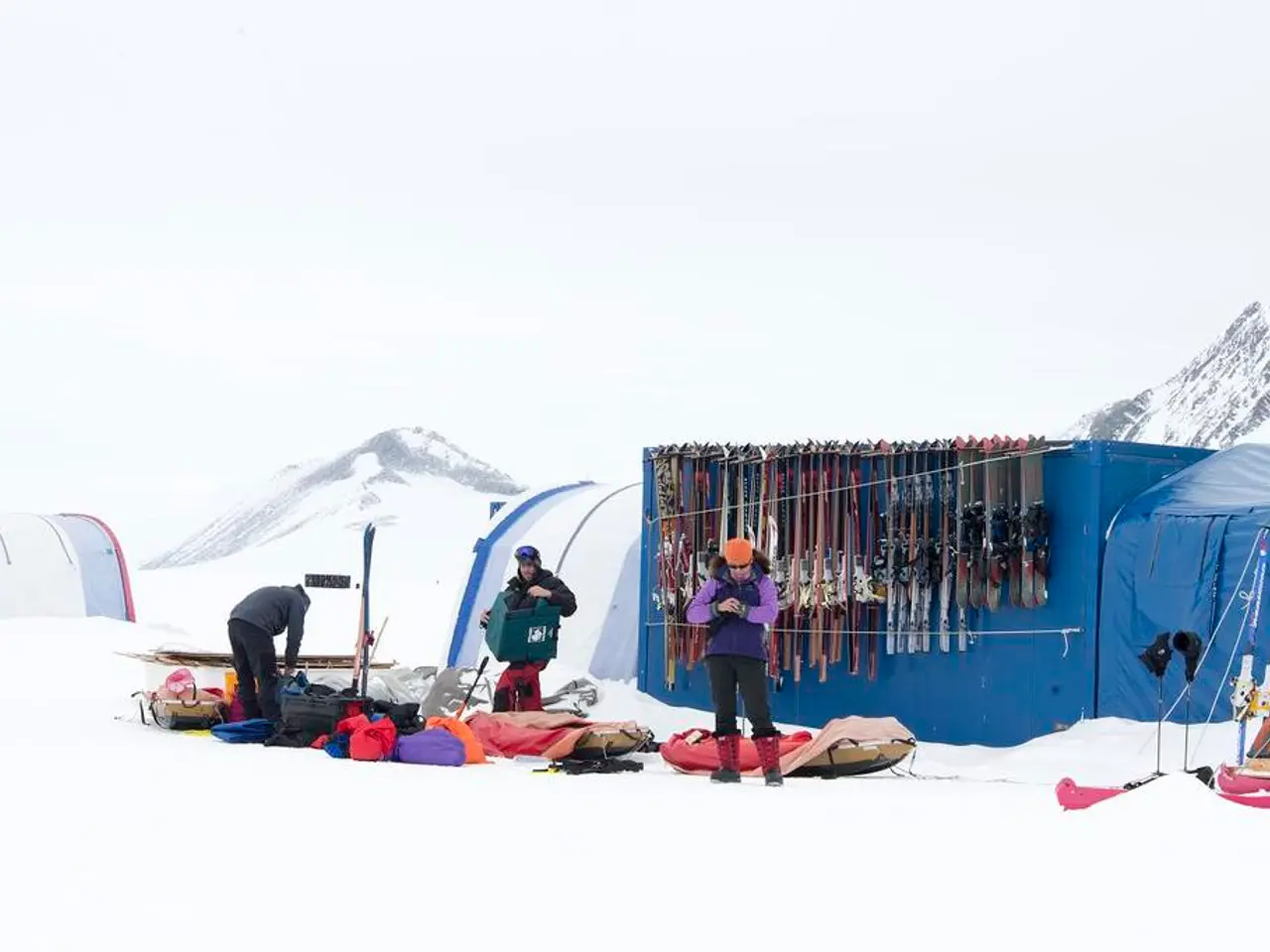Beware of Avalanches in Valley Floors This Springtime
Spring Valley Travel in New Zealand: Prioritizing Safety Amidst Avalanche Risks
As spring unfolds in New Zealand, valley travel requires extra caution due to the persistence of winter hazards such as avalanche risks and the presence of Persistent Weak Layers (PWL) in the snowpack. These hazards remain significant in alpine and backcountry areas during the spring thaw.
To ensure a safe journey, travellers are advised to consult the New Zealand Avalanche Advisory and local Department of Conservation (DOC) updates before setting out. Snow stability can vary rapidly with warming temperatures, and avalanche risk tends to increase during thaws, with PWL within the snowpack causing unstable layers that can lead to avalanches.
Given the highly changeable spring weather, it is essential to be prepared for variable conditions. Carry warm, waterproof clothing and extra layers, even if the forecast looks favourable, as temperature swings can affect snowpack stability and increase avalanche danger.
To minimise risk, limit travel to lower elevations where possible. Higher elevations remain hazardous and less predictable during spring. It is safer to stay on low-level trails and valleys that are less affected by snowpack instability and avalanche risk.
Proper gear and avalanche safety equipment are crucial for those venturing into known avalanche terrain. Carry a beacon, probe, shovel, and know how to use them. Ice and snow-compatible footwear with good grip are also essential.
Informing others and avoiding solo travel in high-risk areas is also crucial. Tell someone your itinerary and expected return time. Given the risks and often limited cell coverage in alpine zones, travelling with others familiar with avalanche safety increases survival chances and quick response.
The DOC advises respecting any track closures or safety warnings about avalanche risks. Be ready to turn back or change plans if conditions deteriorate quickly. If you are heading to areas where there is no regional avalanche forecast, follow the advice of the closest region.
A very cautious approach to any valley travel over the next couple of weeks is recommended. Several large avalanche cycles are anticipated over this period, and spring-like westerly fronts are forecast for the next 7 days in New Zealand. These fronts are expected to generate significant precipitation (rain/snow), rising freezing levels, and strong winds.
Heavy rainfall has already soaked the snowpack, and this will continue. If an avalanche is triggered, it may awaken this PWL, low in the snowpack, resulting in an avalanche much larger than usual. This year, there is a higher chance of avalanches running to the valley floor due to the PWL present throughout much of the Southern Alps.
Pay particular attention to what is above you, where you are stopping or camping, and follow the advice on www.avalanche.net.nz. Avalanches are likely to run to the valley floor, potentially exposing trampers and hunters moving through valleys or accessing gullies or stream beds.
In summary, during spring valley travel in New Zealand, vigilance around avalanche risks and PWL is critical. Preparation, up-to-date information, appropriate equipment, cautious route choices, and respect for the environment’s evolving conditions help ensure safety.
Engaging in outdoor-living activities, such as hiking or camping, requires that one is mindful of the current home-and-garden of the New Zealand weather, especially during the spring season. Given the potential risks associated with avalanches, particularly the presence of Persistent Weak Layers (PWL) in the snowpack, it's crucial to adhere to safety guidelines and updates from the New Zealand Avalanche Advisory and local Department of Conservation (DOC).




